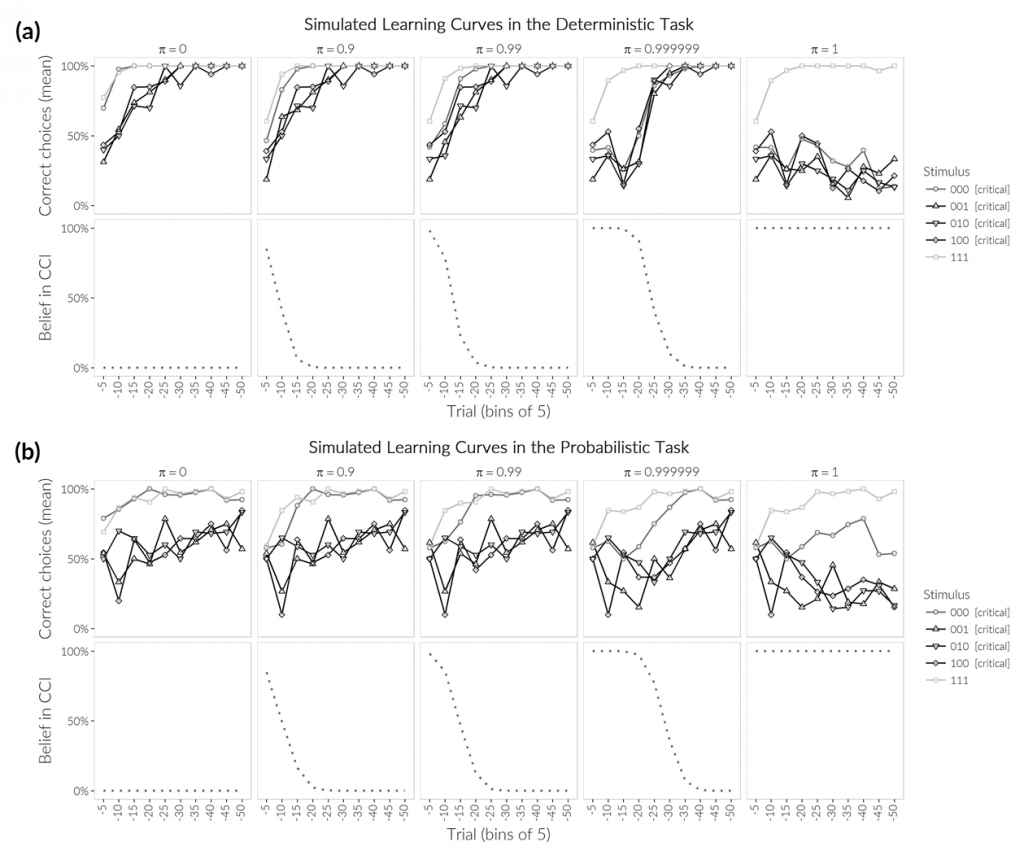Topic
Classification
Grouping objects into classes presents a challenge for AI and humans alike
Setup
DFG
Part of the Deutsche Forschungs-
gemeinschaft (DFG) priority program New Frameworks of Rationality
Design
R
Realized in R-Statistics, JavaScript, and PhP
A Bayesian Classifier that Learns the Task Structure
A robust machine-learning classification algorithm that adapts its mathematical simplicity by learning the structure of the task at hand.
I’ve created a new classifier that can adapt to the structure of the environment. The so-called Naïve Bayes assumption, which is a key assumption of one robust Bayesian classification algorithm, leads to very robust classification but is not always helpful. The new classifier can learn if the data seems to violate the assumption, and adjust classification accordingly.
You can read the scientific paper in Cognitive Science.







